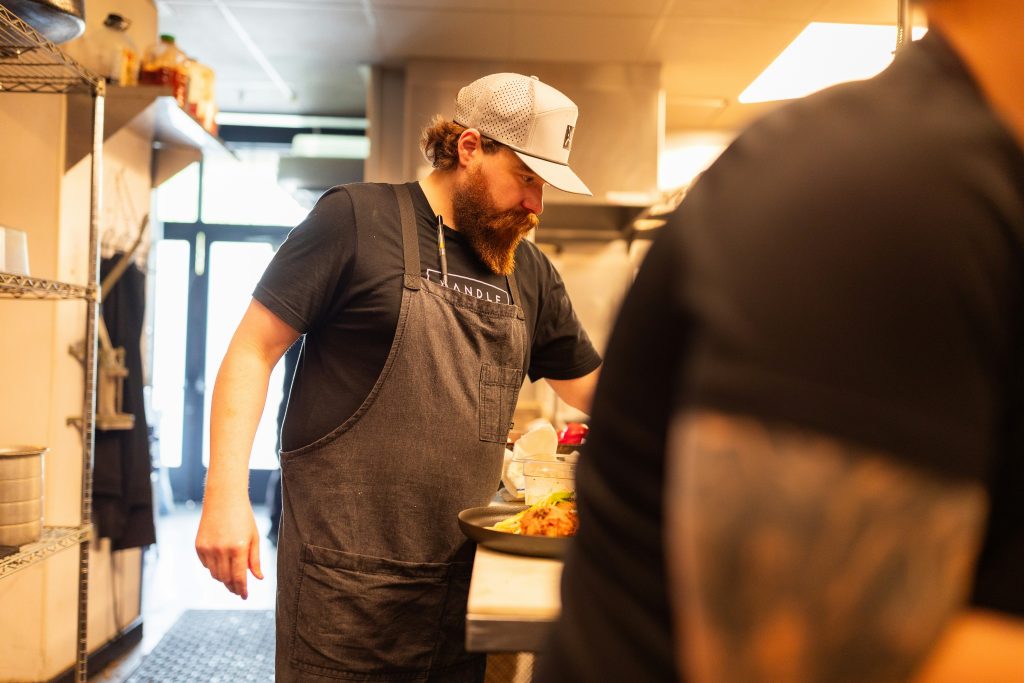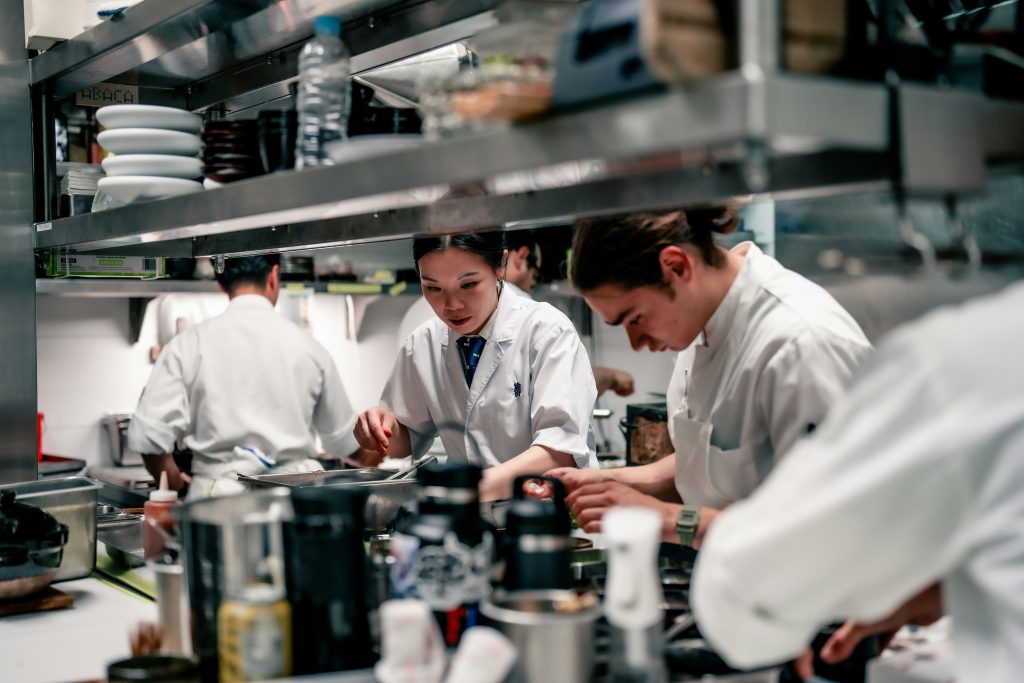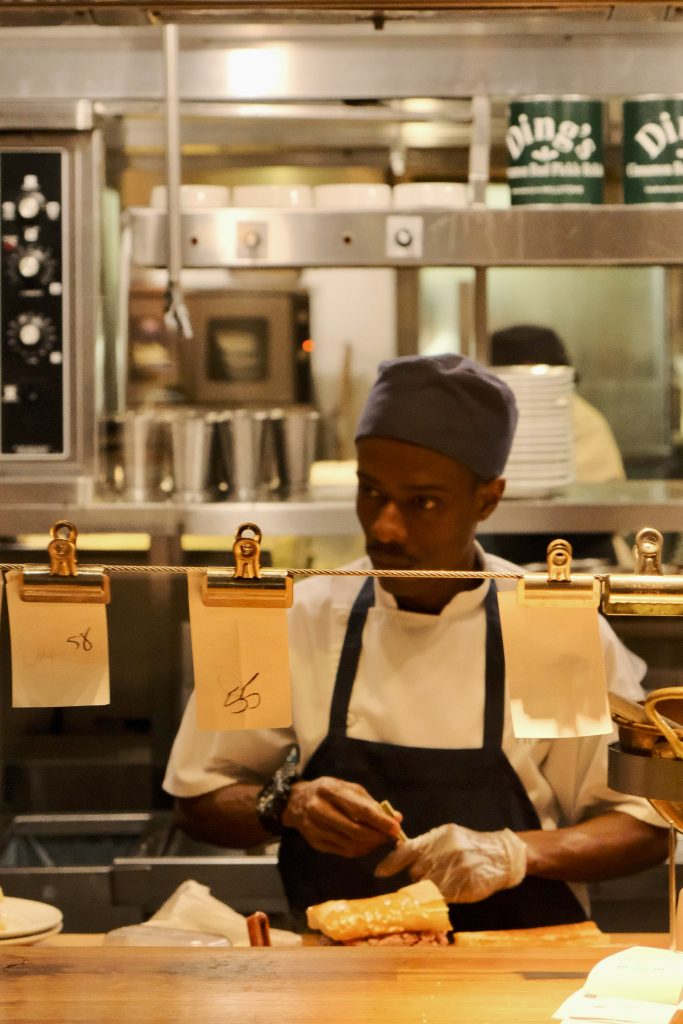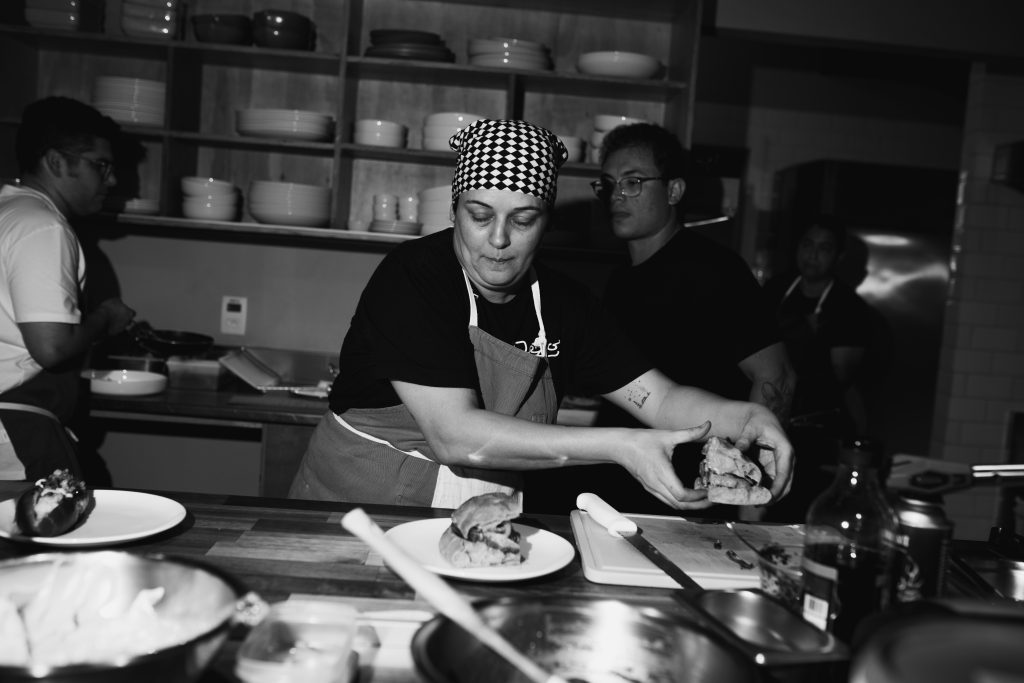
No matter the size, kitchens can be chaotic, loud and fast-paced. Effective communication can make all the difference. It’s the cornerstone of any efficient and successful kitchen — whether there’s a team of two or twenty.
Communicating in a kitchen is different from other workplaces. Chefs and cooks need to share crucial information quickly to succeed and work well as a team, without relying on meetings, emails, or messages.
Here are some tips to keep the kitchen running smoothly:
Address language barriers

If your kitchen has staff who speaks different languages, misunderstandings can happen. This potentially causes a backup in the kitchen, causing your guests to wait for their food.
To tackle this, offer training in various formats, like verbal instructions, demonstrations, and pictures, so everyone understands how things should be done. Using pictures or hand signals can also help staff communicate easily during busy times.
Establish communication procedures

The person in charge of the kitchen should set clear communication rules and procedures so everyone knows what to do. When expectation are clear, the kitchen operates more efficiently during busy shifts. Make sure the staff knows how and when to share orders and timing details to avoid delays and ensure meals go out together. Train your team on these standards to keep things on track.
Encourage communication

Even with set communication standards, employees often need a bit of encouragement and coaching to improve. Spend time observing the team to see where they excel and where they might need help. Show them how to communicate better when you see missed opportunities to connect with colleagues.
Make call-and-response second nature

Just because the head chef gives an instruction doesn’t mean everyone hears it. Since a lot of important information is shared verbally, using call-and-response practices keeps everyone on the same page.
When the head chef gives a command or an order, make sure to respond briefly with something like, “Yes, chef.”, “Heard, chef.”, “Firing, chef.”
In the kitchen, not responding can mean you didn’t hear. A verbal acknowledgment ensures that the chef, the person being addressed, and the rest of the team are all on the same page.
Announce your whereabouts

A busy kitchen is not just loud but can also be dangerous if the team doesn’t take proper cautious. For example, if a cook is carrying a hot pan and doesn’t let others know they’re coming, someone might get burned.
Kitchen layouts can add to the risk. There might be doors without windows, like the one to the walk-in freezer. A cook could be hidden from view while working at a low cooler or coming around a blind corner with a load of dirty dishes.
To avoid accidents, everyone should announce their presence clearly. If you’re moving behind someone, say “behind.” When approaching a corner, call out “corner.” If you’re carrying something hot, shout “hot pan.” And when leaving the walk-in freezer, knock on the door twice to warn others that it’s opening.
Implement tools

Different people communicates best in different ways. Some are great with spoken words, while others prefer written instructions.
In a busy kitchen, it’s smart to use both methods. The call-and-response technique works well for those who remember things easily, but adding written notes can help catch anything that might be missed.
For example, when an order comes in, the chef can call it out and also a visual system to back it up. This could be a simple printer at each station that prints out orders, or more advanced setups like screens above the line showing real-time orders. These systems help ensure everyone gets the same information and can keep track of orders more accurately.
Electronic systems also offer extra benefits, like tracking daily tasks and specials, which saves time for cooking. For team members whoa re hard of hearing or face language barriers, having visual tools like printed tickets or screens can be a big help.
Give respect to get respect

Clear communication—that is, listening and responding thoughtfully—is a sign of respect. Even if you need to raise your voice in a noisy kitchen, avoid shouting or sounding angry. Aim to be heard, not to blame.
Choose your words carefully. Even in a busy service, you can guide and support your team without being harsh.